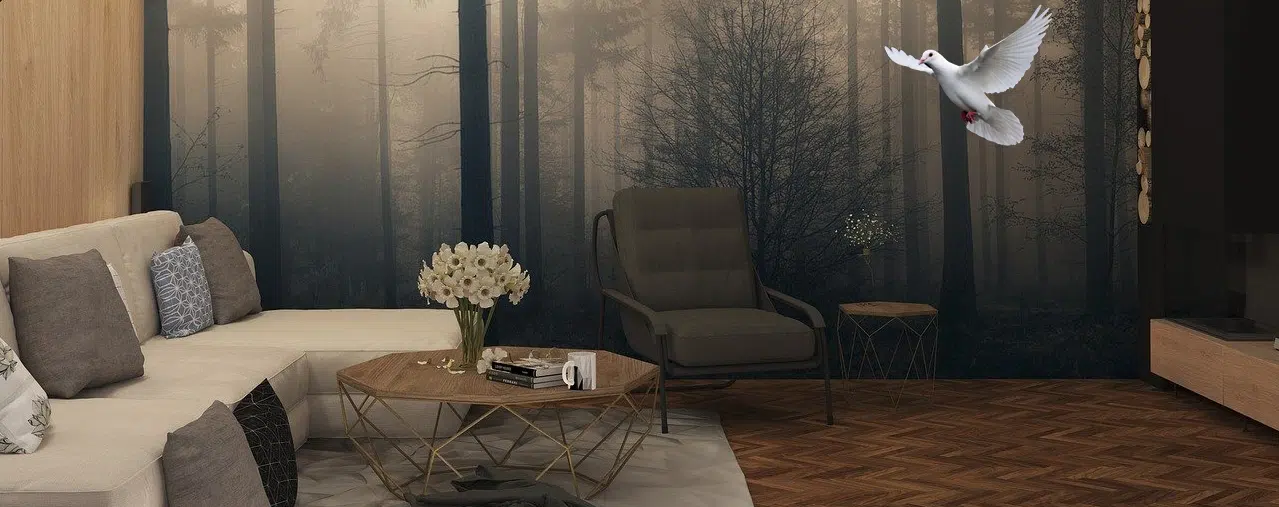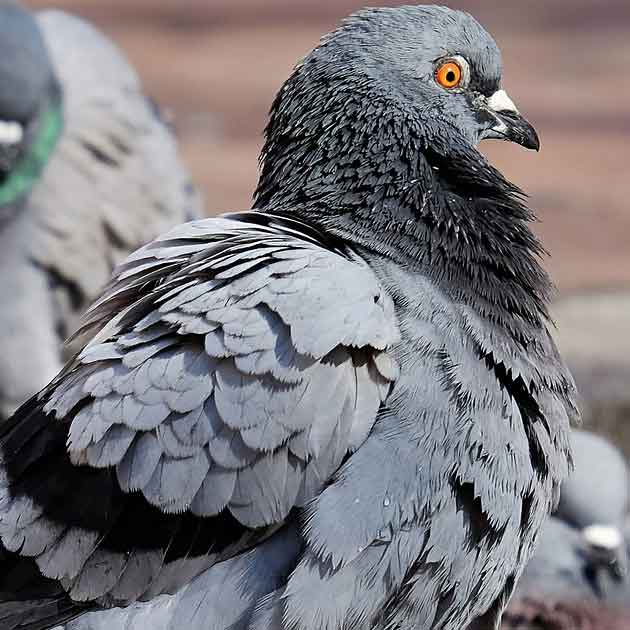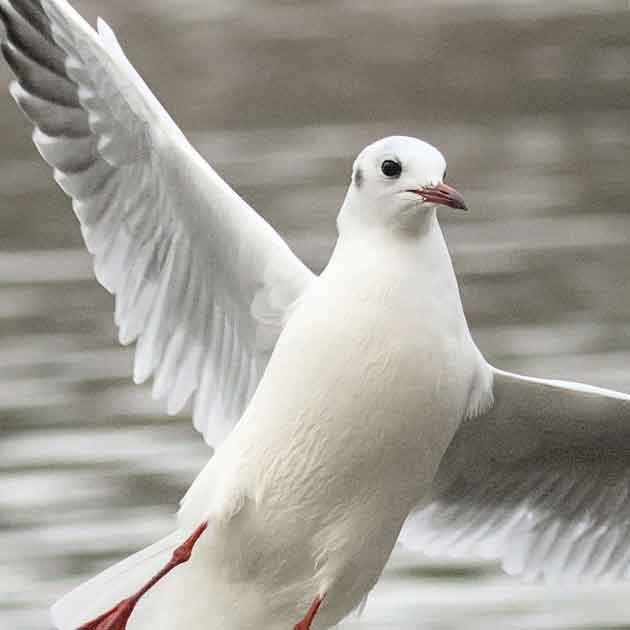You’re sitting at home, enjoying a peaceful afternoon, when suddenly you hear a fluttering sound. You look around and, to your surprise, there’s a bird flapping around your living room!

Don’t panic— being in a situation that leaves you wondering how to get a bird out of your building is more common than you might think. But what should you do? Here’s your guide to how to get a bird out of a building safely.
Why Do Birds Enter Buildings?
Birds are fascinating creatures, but when they find their way into our buildings, it can be a bit of a hassle for everyone involved. So, why do they even venture indoors in the first place? Below we'll explore some of the reasons why birds may enter buildings, including seeking shelter or food, disorientation, and following light.
Seeking Shelter
Birds are pretty smart when it comes to finding safe spots to rest or build their nests. When the weather gets rough or predators lurk nearby, a building with open windows, vents, or cracks can seem like the perfect refuge. So, if you’ve got a cozy nook, chances are, a bird might think so too.
Searching for Food
If your building happens to have crumbs in the kitchen or insects buzzing around the windows, it’s likely that birds will try to get in.
Certain building designs can also play tricks on our feathered friends. Glass facades or shiny surfaces might make birds think they’ve stumbled upon an outdoor feast when in reality, they're just seeing their own reflection.
Following Light
Birds are creatures of habit, and one of those is following the light. Have you ever noticed how they seem drawn to bright windows or skylights? It’s like a beacon calling them in! But sometimes, that light can lead them astray, especially at night.
Artificial lights can confuse migrating birds, causing them to accidentally bump into buildings. It's like trying to find your way in the dark and ending up at the wrong doorstep!
Disorientation
Imagine being in a room full of mirrors with no exit signs—pretty confusing, right? Well, that’s how birds feel when they encounter unfamiliar or reflective surfaces indoors.
Glass windows and mirrors can look like escape routes to them, but instead, they just end up going in circles. So, if you’ve got a bird fluttering around, it might just need a little help finding its way back to the great outdoors!
Risks of Birds in Buildings
While our feathered friends may seem harmless, having them indoors can pose some risks you might not have considered. Let’s take a closer look at why it’s important to address the issue sooner rather than later and learn how to get a bird out of a building.
Diseases
Bird droppings may seem innocuous, but they can carry some nasty surprises. Ever heard of histoplasmosis, cryptococcosis, or psittacosis? These are just a few of the diseases that can hitch a ride in bird droppings.
How do you catch them? Well, it’s not as rare as you might think. Inhaling fungal spores from dried droppings or touching contaminated surfaces can put you at risk. This is a big reason you should know how to get birds out of a building – because that bird might be carrying more than just feathers!
Physical Damage
Bird droppings are gross—but they’re not just unsightly. When droppings accumulate, they can corrode building materials like metal or concrete.
They can transmit those diseases we mentioned above with contaminated surfaces too. So, that bird in your building? It’s not just leaving behind a mess—it’s leaving behind potential health hazards.
Nesting Issues
Birds often like to set up camp in your building’s vents or drainage systems. These nests can clog up important machinery, disrupt airflow, and even pose a fire hazard. If a bird’s nest blocks exhaust vents or accumulates near electrical wiring, it can increase the risk of sparks flying.
Noise and Disturbances
Especially during mating seasons or when birds gather in large flocks, bird songs and vocalizations can be disruptive.
Blockages and Malfunctions
Bird droppings and nesting materials might seem harmless at first glance, but they can wreak havoc on your building’s systems. When they clog up gutters, drains, or HVAC systems, that’s when costs can get high.
Water damage, flooding, or even air quality issues can all come about from birds staying in buildings. And it’s not just the mess you have to worry about—mechanical failures can happen too. Your elevator could get stuck or your machinery could jam, all because of bird debris accumulation.
Legal & Ethical Concerns
There are rules and regulations about dealing with birds in buildings. Depending on where you live, you might need permits for removing certain species or dealing with protected nesting sites. And let’s not forget about ethics—humane treatment of birds is important, too!
It’s all about finding the balance between managing the problem and avoiding harm or injury during the removal process. (That’s what we do here at Hawkeye — ensure humane bird control to help manage birds safely and keep them from coming back).
Additional Cleaning and Maintenance
Having birds in buildings can lead to a significant increase in cleaning and maintenance tasks. Bird droppings, feathers, and nests not only create unsightly messes but also harbor potential health hazards. Regular cleaning becomes essential to remove these droppings and nests from both the interior and exterior of the building.
The corrosive nature of bird droppings can damage building materials like metal and concrete, necessitating repairs and maintenance. Nests and droppings can obstruct gutters, drains, and HVAC systems, leading to water damage, flooding, and air quality issues.
This accumulation of debris can also pose safety risks, increasing the likelihood of slips and falls. Therefore, proactive cleaning and maintenance efforts are crucial to mitigate the risks associated with having birds in buildings and ensure the safety and well-being of occupants while you learn how to get a bird out of a big building.
How to Get a Trapped Bird Out of a Building on Your Own
Minimize Stress
First things first—take a deep breath and stay calm. Birds can sense fear and agitation, so moving slowly and quietly is key to minimizing stress for everyone involved. When it comes to how to get a bird out of a building, avoid sudden movements or loud noises that might startle the bird further.
Close Interior Doors
If you’re trying to manage this on your own or waiting for an animal control specialist to help, start by closing any interior doors to confine the bird to a specific area. This not only makes it easier to keep an eye on our feathered friend but also prevents it from flying deeper into the building or accessing sensitive areas.
Turn Off Interior Lights and Open Windows or Doors
Turn off interior lights to reduce reflections that might confuse the bird and make it hesitant to approach open exits. Open windows or doors wide to create clear escape routes. We want to make sure there are no obstacles standing in the way of our bird’s great escape.
Remove Food and Water Sources
Birds might be tempted to stick around if there’s a tasty treat waiting for them. Remove any food or water sources within the building that might attract birds or encourage them to stay indoors. Seal up food containers and clean up spills promptly to send the message that this isn’t a dine-in establishment!
Provide a Clear Path to Exit
Last but not least in how to get a bird out of a building, let’s make sure our birdie friend has a clear path to freedom. Remove any obstacles or clutter near open windows or doors to create a straight shot of the outdoors. If necessary, temporarily relocate furniture or objects that might obstruct the bird’s flight path. Think of it as rolling out the red carpet for our VIP guests!
Do NOT Try to Catch the Bird
As tempting as it might be to play superhero and swoop in for the rescue, resist the urge to catch the bird by hand. This can cause additional stress and might even result in injury—for both you and the bird!
Instead, be patient and persistent in guiding the bird toward the open exit. With a little encouragement, it’ll find its way out on its own.
Still Not Working? Call Hawkeye for Effective Bird Removal
If all else fails and you’re still struggling with how to get a trapped bird out of a building on your own, don’t hesitate to call in the pros. Professional bird removal services, like Hawkeye, have the expertise and specialized equipment to safely and efficiently handle the situation. With their help, you’ll have that bird out and back where it belongs in no time!














